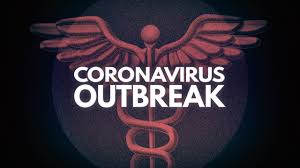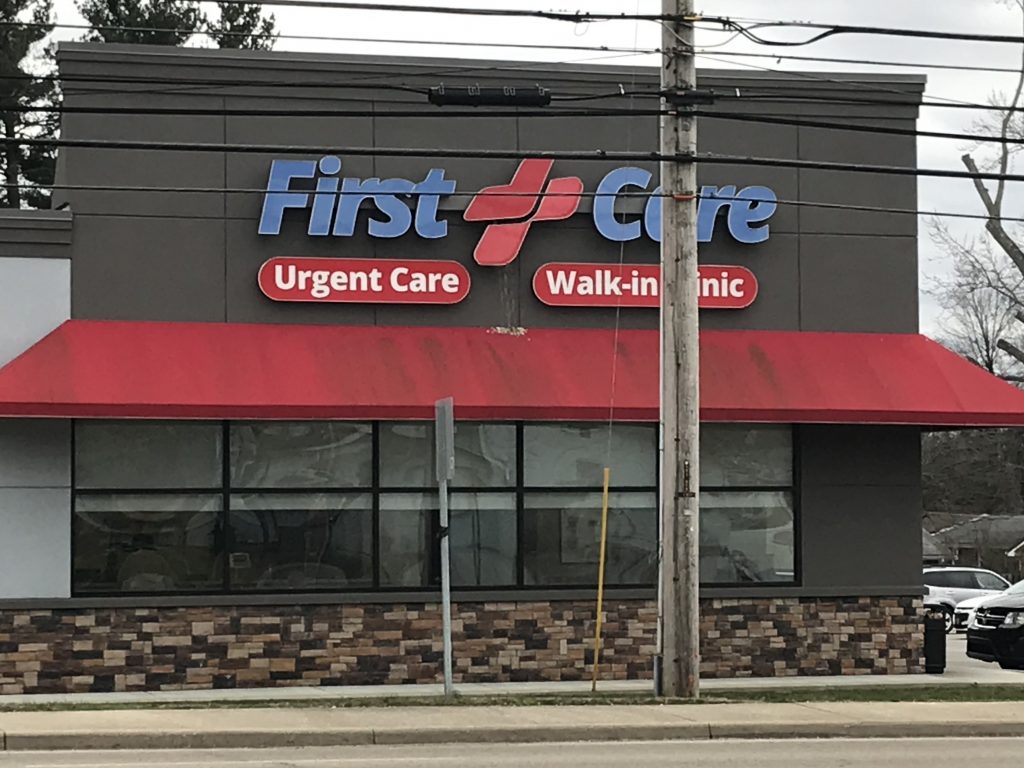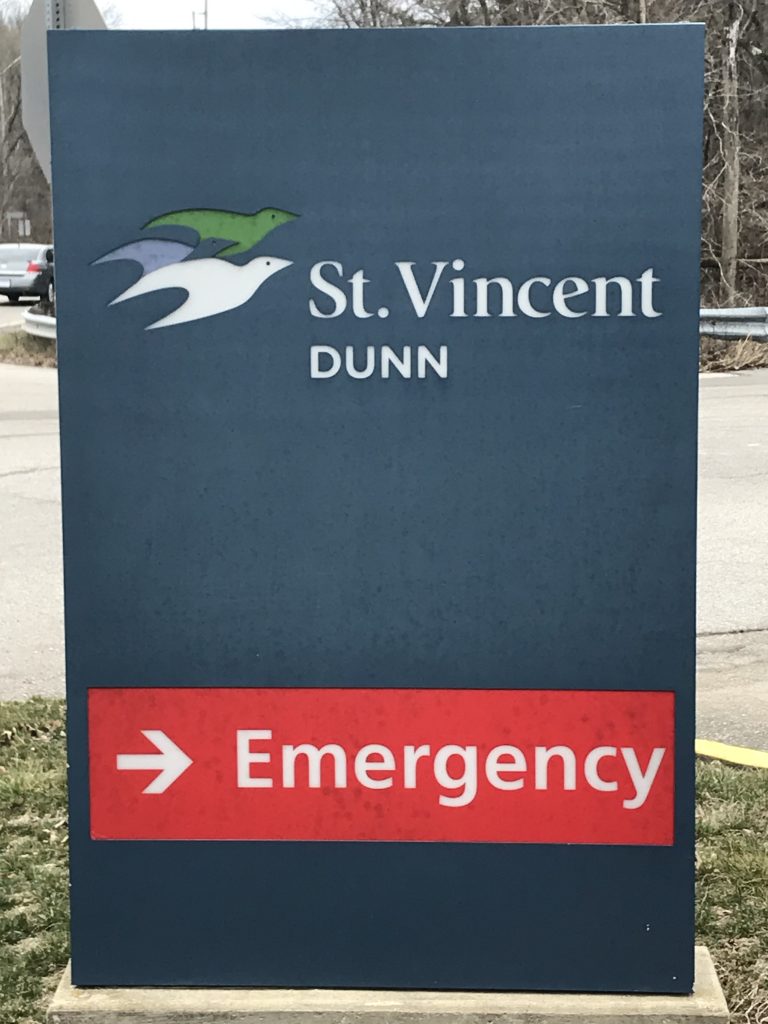
(BEDFORD) – With the first case of coronavirus reported in the State of Indiana, a local healthcare network of professionals is meeting and enacting a team effort on educating, preparing, and responding to the coronavirus, otherwise known as COVID-19.
Lawerence County Public Health Nurse Mary Kinser, along with Lawrence County Emergency Management Director Valerie Luchauer and other health care experts, will be keeping the public up to date and sharing valuable information.
“There is no need to panic. Education and knowing how to take care of yourself and your family is key to this outbreak,” Luchauer stated.

“We have been preparing for this for some time by staying in contact with the CDC, Indiana Department of Health and by meeting yesterday with all of the Lawrence County hospitals and emergency management,” said Lawrence County Public Health Nurse Mary Kinser.

“Other recommendations to be aware of are not going directly to the emergency room or a walk-in clinic if you are experiencing respiratory symptoms. Call the local emergency room first before going as you can contaminate a whole emergency department. Also, do not go to the Lawrence County Health Department seeking treatment. However, if you have any questions you can call the Health Department at 812-275-3234,” Kinser noted.

“Anyone who has not had their flu shot or pneumococcal vaccine is recommended to get one. This may not prevent the coronavirus but will help with some of the symptoms and prevent secondary infections,” Kinser added. “Always wash your hands, cover coughs and follow normal prevention techniques when it comes to coughs and flu.”
“Make sure you wash your hands for over 20 seconds with soap and water. If you do not have water, alcohol based sanitizers and wipes are recommended,” Kinser noted.
“We will be meeting next week with healthcare professionals, healthcare coalitions, and all local emergency responders from the Lawrence County Police Department, Emergency Medical Responders, and Emergency Management officials to continue to be able to communicate to emergency personnel,” Kinser concluded.

Governor Eric Holcomb has issued an Executive Order to deal with this public health emergency. The State of Indiana has been also preparing for this public health emergency and the Indiana Department of Health has been put in charge as the lead agency in dealing with the emergency.
Today, Indiana confirmed its first case of coronavirus. The male patient recently traveled to Boston and had contact with individuals at an event where other positive cases have been reported, according to Dr. Kristina Box.
He returned to Indianapolis on Wednesday and is being treated at Community Hospital North in Indianapolis. Dr. Box said that this an isolated case. The presumptive positive results came from a state test, but still need to be confirmed by the Centers for Disease Control and Prevention.
“The question never has been if Indiana would get a case, but when we could see one,” she added.
Officials at the hospital said the man contacted the state’s health department to say he was concerned he may have the coronavirus following his return to Indiana and the department alerted the hospital prior to his arrival prior to testing.
Precautions were taken to ensure the man took a route that would have no contact with other patients. After being tested he returned to self-quarantine.
“The patient and the hospital did everything possible to limit the risk of exposure to other individuals,” Dr. Box said. “The situation with COVID-19 is changing rapidly and we can expect to see other cases in Indiana in the future.”
CDC: Preventing the Spread of Coronavirus Disease 2019 in Homes and Residential Communities Interim Guidance.
This interim guidance is based on what is currently known about the epidemiology of COVID-19 and the transmission of other viral respiratory diseases. CDC will update this interim guidance as needed and as additional information becomes available.
Coronaviruses are a large family of viruses, some causing illness in people and others that circulate among animals, including camels, cats, and bats. Rarely, animal coronaviruses can infect people exposed to infected animals, and then spread among people, as has been seen with MERS-CoV and SARS-CoV, and likely now with SARS-CoV-2, the virus that causes COVID-19. This interim guidance may help prevent this virus from spreading among people in their homes and in other residential communities.
This interim guidance is intended for people with confirmed or suspected COVID-19, including persons under investigation, who do not need to be hospitalized and who can receive care at home.
Your healthcare provider and public health staff will evaluate whether you can be cared for at home. If it is determined that you do not need to be hospitalized and can be isolated at home, you will be monitored by staff from your local or state health department. You should follow the prevention steps below until a healthcare provider or local or state health department says you can return to your normal activities.
Stay home except to get medical care.
People who are mildly ill with COVID-19 are able to isolate at home during their illness. You should restrict activities outside your home, except for getting medical care. Do not go to work, school, or public areas. Avoid using public transportation, ride-sharing, or taxis.
Separate yourself from other people and animals in your home
People:
As much as possible, you should stay in a specific room and away from other people in your home. Also, you should use a separate bathroom, if available.
Animals:
You should restrict contact with pets and other animals while you are sick with COVID-19, just like you would around other people. Although there have not been reports of pets or other animals becoming sick with COVID-19, it is still recommended that people sick with COVID-19 limit contact with animals until more information is known about the virus. When possible, have another member of your household care for your animals while you are sick. If you are sick with COVID-19, avoid contact with your pet, including petting, snuggling, being kissed or licked, and sharing food. If you must care for your pet or be around animals while you are sick, wash your hands before and after you interact with pets and wear a facemask. See COVID-19 and Animals for more information.
Call ahead before visiting your doctor
If you have a medical appointment, call the healthcare provider and tell them that you have or may have COVID-19. This will help the healthcare provider’s office take steps to keep other people from getting infected or exposed.
Wear a facemask
You should wear a facemask when you are around other people (e.g., sharing a room or vehicle) or pets and before you enter a healthcare provider’s office. If you are not able to wear a facemask (for example, because it causes trouble breathing), then people who live with you should not stay in the same room with you, or they should wear a facemask if they enter your room.
Cover your coughs and sneezes
Cover your mouth and nose with a tissue when you cough or sneeze. Throw used tissues in a lined trash can. Immediately wash your hands with soap and water for at least 20 seconds or, if soap and water are not available, clean your hands with an alcohol-based hand sanitizer that contains at least 60% alcohol.
Clean your hands often
Wash your hands often with soap and water for at least 20 seconds, especially after blowing your nose, coughing, or sneezing; going to the bathroom; and before eating or preparing food. If soap and water are not readily available, use an alcohol-based hand sanitizer with at least 60% alcohol, covering all surfaces of your hands and rubbing them together until they feel dry.
Soap and water are the best option if hands are visibly dirty. Avoid touching your eyes, nose, and mouth with unwashed hands.
Avoid sharing personal household items
You should not share dishes, drinking glasses, cups, eating utensils, towels, or bedding with other people or pets in your home. After using these items, they should be washed thoroughly with soap and water.
Clean all “high-touch” surfaces everyday
High touch surfaces include counters, tabletops, doorknobs, bathroom fixtures, toilets, phones, keyboards, tablets, and bedside tables. Also, clean any surfaces that may have blood, stool, or body fluids on them. Use a household cleaning spray or wipe, according to the label instructions. Labels contain instructions for safe and effective use of the cleaning product including precautions you should take when applying the product, such as wearing gloves and making sure you have good ventilation during use of the product.
Monitor your symptoms
Seek prompt medical attention if your illness is worsening (e.g., difficulty breathing). Before seeking care, call your healthcare provider and tell them that you have, or are being evaluated for, COVID-19. Put on a facemask before you enter the facility. These steps will help the healthcare provider’s office to keep other people in the office or waiting room from getting infected or exposed. Ask your healthcare provider to call the local or state health department. Persons who are placed under active monitoring or facilitated self-monitoring should follow instructions provided by their local health department or occupational health professionals, as appropriate.
If you have a medical emergency and need to call 911, notify the dispatch personnel that you have, or are being evaluated for COVID-19. If possible, put on a facemask before emergency medical services arrive.
Discontinuing home isolation
Patients with confirmed COVID-19 should remain under home isolation precautions until the risk of secondary transmission to others is thought to be low. The decision to discontinue home isolation precautions should be made on a case-by-case basis, in consultation with healthcare providers and state and local health departments.
Recommended precautions for household members, intimate partners, and caregivers in a nonhealthcare setting1 of
A patient with symptomatic laboratory-confirmed COVID-19
or
A patient under investigation
Household members, intimate partners, and caregivers in a nonhealthcare setting may have close contact2 with a person with symptomatic, laboratory-confirmed COVID-19 or a person under investigation. Close contacts should monitor their health; they should call their healthcare provider right away if they develop symptoms suggestive of COVID-19 (e.g., fever, cough, shortness of breath) (see Interim US Guidance for Risk Assessment and Public Health Management of Persons with Potential Coronavirus Disease 2019 (COVID-19) Exposure in Travel-associated or Community Settings.)
Close contacts should also follow these recommendations:
Make sure that you understand and can help the patient follow their healthcare provider’s instructions for medication(s) and care. You should help the patient with basic needs in the home and provide support for getting groceries, prescriptions, and other personal needs.
Monitor the patient’s symptoms. If the patient is getting sicker, call his or her healthcare provider and tell them that the patient has laboratory-confirmed COVID-19. This will help the healthcare provider’s office take steps to keep other people in the office or waiting room from getting infected. Ask the healthcare provider to call the local or state health department for additional guidance. If the patient has a medical emergency and you need to call 911, notify the dispatch personnel that the patient has, or is being evaluated for COVID-19.
Household members should stay in another room or be separated from the patient as much as possible. Household members should use a separate bedroom and bathroom, if available.
Prohibit visitors who do not have an essential need to be in the home.
Household members should care for any pets in the home. Do not handle pets or other animals while sick. For more information, see COVID-19 and Animals.
Make sure that shared spaces in the home have good air flow, such as by an air conditioner or an opened window, weather permitting.
Perform hand hygiene frequently. Wash your hands often with soap and water for at least 20 seconds or use an alcohol-based hand sanitizer that contains 60 to 95% alcohol, covering all surfaces of your hands and rubbing them together until they feel dry. Soap and water should be used preferentially if hands are visibly dirty.
Avoid touching your eyes, nose, and mouth with unwashed hands.
The patient should wear a facemask when you are around other people. If the patient is not able to wear a facemask (for example, because it causes trouble breathing), you, as the caregiver, should wear a mask when you are in the same room as the patient.
Wear a disposable facemask and gloves when you touch or have contact with the patient’s blood, stool, or body fluids, such as saliva, sputum, nasal mucus, vomit, urine.
Throw out disposable facemasks and gloves after using them. Do not reuse.
When removing personal protective equipment, first remove and dispose of gloves.
Then, immediately clean your hands with soap and water or alcohol-based hand sanitizer. Next, remove and dispose of facemask, and immediately clean your hands again with soap and water or alcohol-based hand sanitizer.
Avoid sharing household items with the patient. You should not share dishes, drinking glasses, cups, eating utensils, towels, bedding, or other items. After the patient uses these items, you should wash them thoroughly (see below “Wash laundry thoroughly”).
Clean all “high-touch” surfaces, such as counters, tabletops, doorknobs, bathroom fixtures, toilets, phones, keyboards, tablets, and bedside tables, every day. Also, clean any surfaces that may have blood, stool, or body fluids on them.
Use a household cleaning spray or wipe, according to the label instructions. Labels contain instructions for safe and effective use of the cleaning product including precautions you should take when applying the product, such as wearing gloves and making sure you have good ventilation during use of the product.
Wash laundry thoroughly.
Immediately remove and wash clothes or bedding that have blood, stool, or body fluids on them.
Wear disposable gloves while handling soiled items and keep soiled items away from your body. Clean your hands (with soap and water or an alcohol-based hand sanitizer) immediately after removing your gloves.
Read and follow directions on labels of laundry or clothing items and detergent. In general, using a normal laundry detergent according to washing machine instructions and dry thoroughly using the warmest temperatures recommended on the clothing label.
Place all used disposable gloves, facemasks, and other contaminated items in a lined container before disposing of them with other household waste. Clean your hands (with soap and water or an alcohol-based hand sanitizer) immediately after handling these items. Soap and water should be used preferentially if hands are visibly dirty.
Discuss any additional questions with your state or local health department or healthcare provider.
Footnotes:
1) Home healthcare personnel should refer to Interim Infection Prevention and Control Recommendations for Patients with Known or Patients Under Investigation for Coronavirus Disease 2019 (COVID-19) in a Healthcare Setting.
2) Close contact is defined as—
a) being within approximately 6 feet (2 meters) of a COVID-19 case for a prolonged period of time; close contact can occur while caring for, living with, visiting, or sharing a health care waiting area or room with a COVID-19 case
– or –
b) having direct contact with infectious secretions of a COVID-19 case (e.g., being coughed on).



